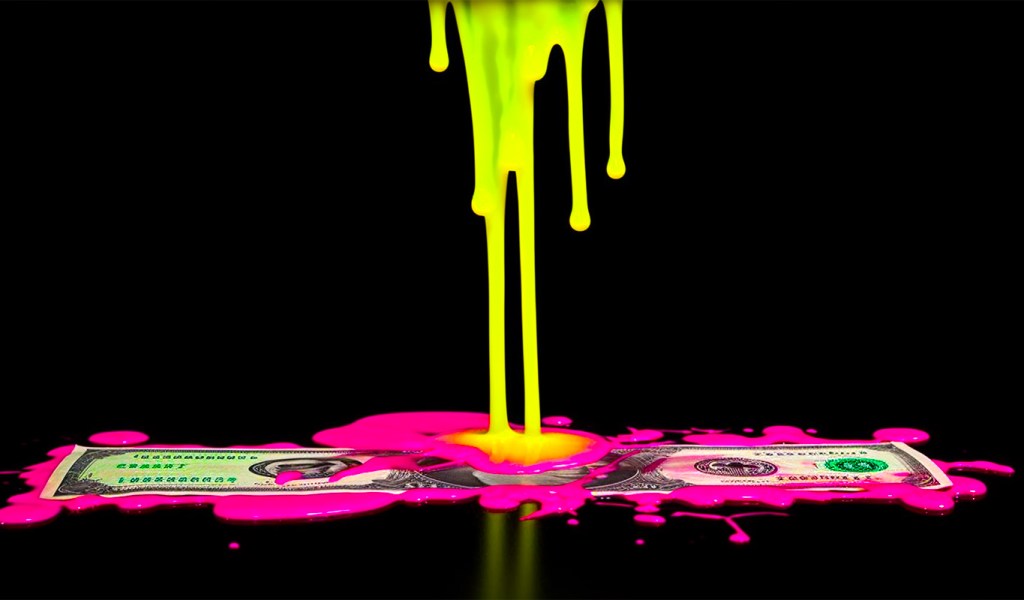
The US appears headed for a hard landing and a recession, according to the chief economist at one of Europe’s biggest banks. Deutsche Bank’s David Folkerts-Landau says a recession is the highly likely cost of the Federal Reserve’s rapid sequence of interest rate hikes, even if it achieves the desired outcome of lower inflation, reports […]
The post Deutsche Bank Warns US Recession Imminent, Says Avoiding a Hard Landing Is Next to Impossible: Report appeared first on The Daily Hodl.
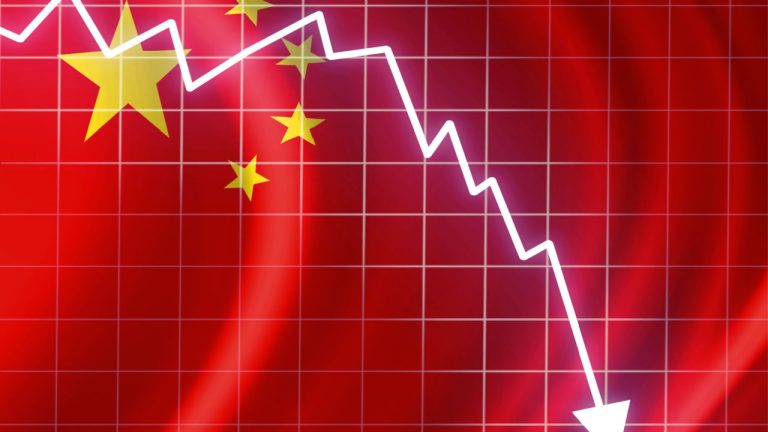 Inflation in China registered an increase of 0.1% year-over-year in April, according to numbers from the National Bureau of Statistics of the country, falling below expectations. Some analysts are already warning about the dangers of deflation, even calling on the Chinese government to deliver cash handouts in order to push consumer demand. Low Inflation Numbers […]
Inflation in China registered an increase of 0.1% year-over-year in April, according to numbers from the National Bureau of Statistics of the country, falling below expectations. Some analysts are already warning about the dangers of deflation, even calling on the Chinese government to deliver cash handouts in order to push consumer demand. Low Inflation Numbers […]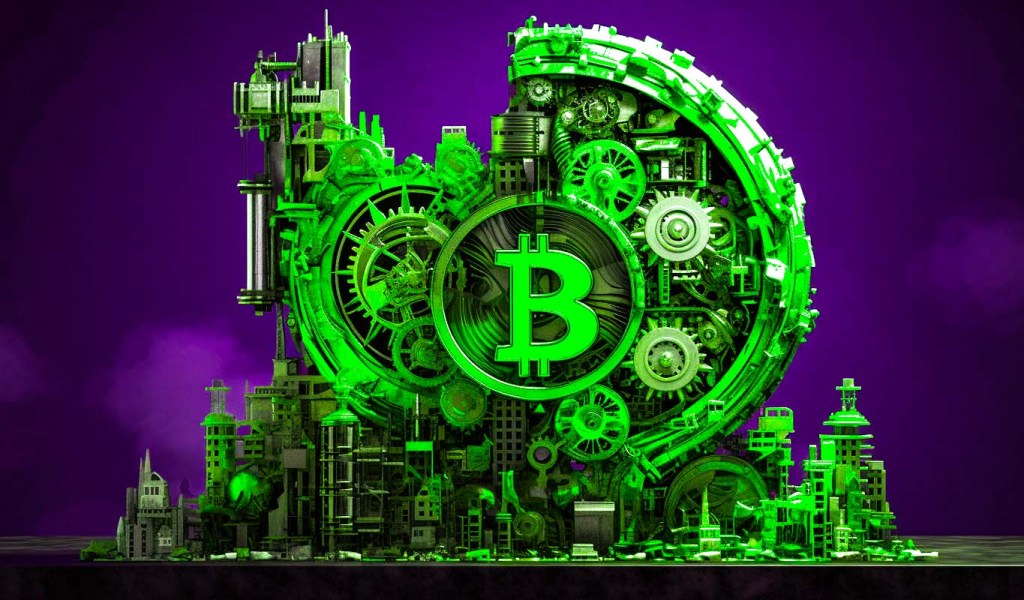
Bloomberg Intelligence’s senior macro strategist Mike McGlone is wary of crypto assets amid a worsening economic climate. McGlone says in a new report that cryptos, outperforming other assets, could plummet if deflation sets in. According to the Bloomberg Intelligence senior macro strategist, deflationary risks are rising. “It’s been a year of rebounds for just about […]
The post One Looming Catalyst Could Trigger Bitcoin and Crypto Crash, Warns Bloomberg Analyst Mike McGlone appeared first on The Daily Hodl.

A political deadlock over the U.S. debt ceiling and its potential impact on the price of Bitcoin, which is already up 75% in 2023.
On April 26, House Republicans scarcely passed their bill to increase the U.S. debt ceiling. This led to analysts already weighing its potential impact on the price of Bitcoin (BTC), ranging from extremely bearish to overly bullish.
Ultimately, U.S. dollar liquidity is the key to both of these opposing viewpoint.
Some analysts, including Jesse Meyers, the COO of investment firm Onramp, believe raising the debt ceiling would prompt the Federal Reserve to print more money, thus boosting capital inflows into "risky" assets like Bitcoin.

The debt ceiling represents the maximum amount of money the U.S. government can borrow to pay its bills.
Related: Fed balance sheet adds $393B in two weeks — Will this send Bitcoin price to $40K?
Raising it means they can issue more debt to generate more capital. But since the Fed is not buying bonds anymore thanks to its "quantitative tightening," and the flow of available M2 money supply crashing, the U.S. government debt may find it hard to attract buyers.

In other words, a deflationary recession that Meyers believes will force the Fed to return to its quantitive easing policy.
"When the debt ceiling is lifted and credit-contraction leads to economic crisis... They will have to print money on a massive scale," he noted, reminding:
"Bitcoin was the winner during the last round of stimulus."

The government has already hit its $31.4 trillion debt ceiling in January 2023. So, it theoretically cannot generate more capital until the Senate passes the House-passed bill.

However, it's unlikely to pass the Senate and Biden has also vowed to veto the bill.
The standoff could result in the U.S. government defaulting on its debt in June, which poses negative consequences for the U.S. dollar, according to Jeff John Roberts, crypto editor at Fortune.
"If [Republicans] decide to go the kamikaze route during the current debt ceiling standoff, it will deliver another major hit to the dollar's credibility—and a further boost to Bitcoin," he noted.
Former U.S. Treasury Secretary Lawrence Summers meanwhile downplays the fears associated with a potential debt default, noting that the odds of it happening stands under 2%.
Summers:
"I think the odds that we will default in the sense of insolvency, and over some interval people who hold bonds will not be able to get paid, are - assuming the absence of a major war - certainly under 2% over the next decade."
Presenting a similar outlook, analyst TedTalksMacro says extending the debt ceiling would ensure that the Fed continues contracting its balance sheet through the ongoing QT.
That points to lower liquidity and, in turn, more downside pressure for Bitcoin.
"One caveat to the liquidity down/sideways for the rest of 2023 would be the Fed winding up or slowing the current pace QT," TedTalksMacro adds.
This article does not contain investment advice or recommendations. Every investment and trading move involves risk, and readers should conduct their own research when making a decision.
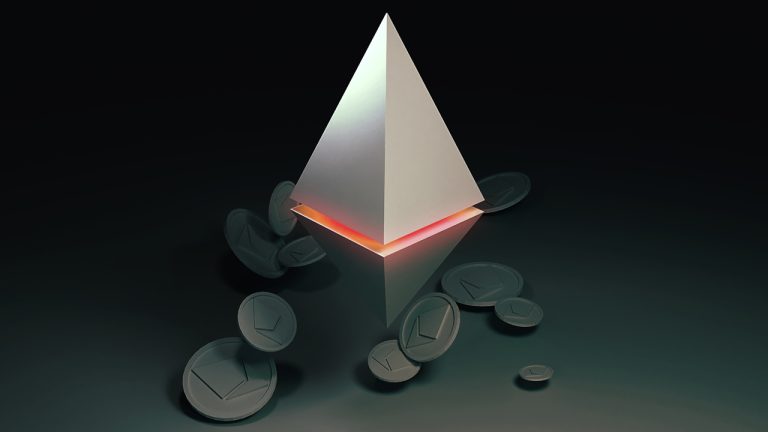 After the transition from proof-of-work (PoW) to proof-of-stake (PoS), Ethereum’s annual issuance rate has been reduced to negative 0.057%, according to statistics 158 days after The Merge. The metrics indicate that more ethereum tokens have been removed than issued, and if the chain were still under PoW consensus, 1,823,678 ether would have been minted to […]
After the transition from proof-of-work (PoW) to proof-of-stake (PoS), Ethereum’s annual issuance rate has been reduced to negative 0.057%, according to statistics 158 days after The Merge. The metrics indicate that more ethereum tokens have been removed than issued, and if the chain were still under PoW consensus, 1,823,678 ether would have been minted to […]
A deflationary Ethereum supply does not necessarily mean a bullish market for ETH, at least in the near term.
The price of Ethereum's native token, Ether (ETH), has surged by more than 40% year-to-date to around $1,750, the highest level in seven months. However, ETH price is not out of the woods yet despite several bullish cues such as the Shanghai upgrade in the pipeline.
Ether's rise has appeared primarily in the wake of similar upside moves elsewhere in the crypto market, responding to lowering inflation that reduces the Federal Reserve's likelihood of raising interest rates aggressively.
At the same time, warnings about an imminent bull trap in the risky markets have emerged, which may wipe out their recent profits. Ethereu, due to its long-term correlation with stocks and Bitcoin, faces similar risks.
Bull Trap About to confirm on $ETH and $BTC along with shooting stars on both. Failed breaks usually trigger the biggest opposing moves. You have been warned. If stocks do dump, reversal signal on crypto can follow. Close > that shooting star candle invalidates the trap. pic.twitter.com/tJ9c5N0M3J
— Cameron Fous (@Cameronfous) February 16, 2023
Let's take a closer look at several potential bullish and bearish catalysts for the price of Ethereum below.
The issuance rate of Ether has dropped to its lowest level since the network's transition to Proof-of-Stake (PoS) via "the Merge" in September.
On Feb. 20, Ether's annual supply since the Merge shrunk to -0.056%. In other words, the Ethereum network had been minting fewer ETH tokens than were removed from the supply in the past five months.

Investors typically perceive a cryptocurrency with a fixed supply or deflationary issuance rate as bullish in the longer term.
#Ethereum's #deflation #rate is accelerating by the day. This has very positive impact on the supply/demand dynamics, and should send the price a lot higher as demand increases. I think this is happening very soon. #ETH #ETHE pic.twitter.com/dnHVKBabuf
— Jesse Dow (@JesseLeeDow1) February 16, 2023
Ethereum's supply is currently around 120.50 million, but there is technically no max supply. The London hard fork in August 2021, however, introduced a fee-burning mechanism that added deflationary properties to Ether's tokenomics.
As a result of this upgrade, the higher the Ethereum network's transaction fees at any given time, the more Ether will be "burned" or removed from the supply forever.
Interestingly, Ethereum's median gas price has rebounded to a seven-month high of 27.13 Gwei (the smallest ETH unit) in the week ending Feb. 17.

ETH demand must not drop against a deflationary supply rate for the price to climb. One potential bullish catalyst in the pipeline for Ethereum is its upcoming network upgrade dubbed Shanghai, slated for mid-March.
The Shanghai hard fork enables users who have locked their Ether into Ethereum's PoS smart contract to withdraw their assets finally. This increased liquidity could encourage more people to hold and stake Ether tokens, according to Kennan Mell, an independent market analyst.
In his SeekingAlpha note, Mell argues:
"It's possible that the successful implementation of staking withdrawals will boost Ethereum's price as new investors decide to buy in right afterward, either because they were waiting to buy until the network successfully went through a risky hard fork to implement withdrawals or because they are lured by a more liquid staking yield."
Meanwhile, the total value locked in the Ethereum PoS contract continues to rise to new record highs, with the latest data showing deposits worth nearly 16.63 million ETH.

The above-mentioned potential bullish catalysts for ETH price, however, could be offset by regulatory crackdowns and unfavorable technicals in the near term.
In February, the United States Securities and Exchange Commission (SEC) fined Kraken, a popular crypto exchange, $30 million for not registering its staking-as-a-service program, which includes the option of Ethereum staking.
Related: Ethereum's Shanghai fork is coming, but it doesn't mean investors should dump ETH
Coinbase exchange CEO Brian Armstrong also warned that the SEC might ban crypto staking services for retail investors altogether. If true, such a prohibition could hurt Ether's demand among U.S. investors.
Resembles poor financial advice to diversify into stocks in an economy of high FFR and inflation
— oracledaddy (@oracIedaddy) February 20, 2023
But, SEC wanting to ban staking is valid
Major exchanges like #Binance can no longer offer in-app staking
AND
PoS protocols like #Ethereum will be subject to security laws & taxes https://t.co/1YxpVNxD0B
From a technical perspective, Ether price is currently testing a key resistance confluence for a potential pullback.
Notably, the confluence comprises a multi-month descending trendline resistance and a 50-week exponential moving average (50-week EMA; the red wave), as shown below.

A pullback from the confluence could have ETH's price test the 200-week EMA (the blue wave) near $1,550 as its short-term downside target.
Furthermore, an extended correction could push the price toward the black ascending trendline support near $1,200 by March 2023, down about 30% from the current levels.
Conversely, a decisive breakout above the descending trendline resistance could activate a bullish reversal setup toward the $2,000-$2,500 area.
This article does not contain investment advice or recommendations. Every investment and trading move involves risk, and readers should conduct their own research when making a decision.

While the rate increase was expected by the markets and Jerome Powell indicated more increases will come, the market has reacted positively to the Fed chairman’s comments.
The price of Bitcoin (BTC) broke through the $24,000 ceiling and the total crypto market cap jumped nearly 4% after United States Federal Reserve Chair Jerome Powell indicated that inflation had begun slowing down in the world’s largest economy.
“We can now say, I think for the first time, that the disinflationary process has started […] we see it really in goods prices,” said Powell during a Feb. 1 Federal Open Market Committee press briefing shortly after announcing an interest rate hike of 25 basis points.
The rate hike and Powell’s remarks appeared to have gone down well in the crypto markets, which had been trading sideways in the lead-up to the speech but saw market cap increase by over $40 billion in the hours after the announcement.

The global crypto market cap is now at $1.09 trillion, up 3.88% over the last day, according to the latest figures from Coinmarketcap.
Meanwhile, BTC tipped slightly over $24,000 for the first time in 2023, reaching $24,161.27 according to Coinmarketcap.
Related: Bitcoin bulls plan to flip $23K to support by aiming to win this week’s $1B options expiry
That being said, Powell said they still expect inflation to continue rising in the services sector for some time and to be prepared for “ongoing rate rises.”
“We see ourselves as having more persistent inflation in that [services] sector, which will take longer to get down, and we have to complete the job. That’s what we’re here for.”
Powell noted that “ongoing rate rises” would still be appropriate as the Federal Reserve attempts to bring inflation back to its 2% target level.
Fed Reserve hikes by 0.25%. Its 8th hike. The Fed did not indicate its at the end of its hiking cycle. But, Fed chair said in his speech he sees inflation coming down soon. 50% of inflation is in “disinflationary” phase. Markets react positively. #FOMC #Fed #asx $spx $ndq $xjo pic.twitter.com/1misOrnD2b
— Jessica Amir (@JessicaDAmir) February 1, 2023
It should be noted that disinflation refers to a slowdown in the rate of increase of general price levels, as opposed to deflation, where the general price level of goods and services decreases.
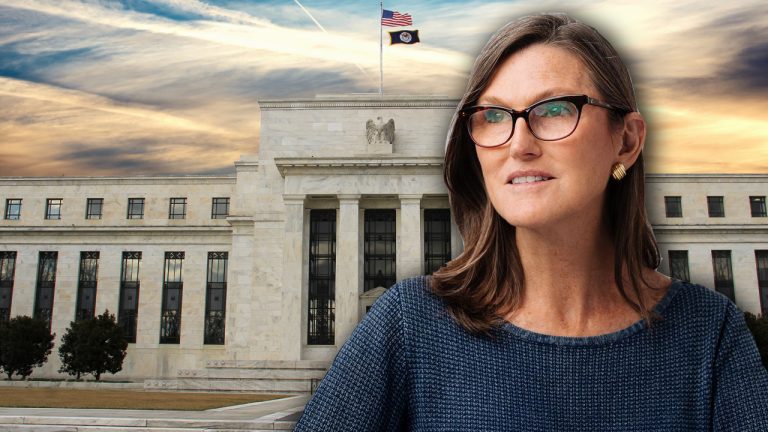 Following the United Nations Conference on Trade and Development (UNCTAD) report that the U.S. Federal Reserve should stop raising rates, Ark Invest CEO Catherine Wood has published an open letter to the U.S. central bank asking the institution to stop raising interest rates. Wood says that the “unprecedented 13-fold increase in interest rates” has not […]
Following the United Nations Conference on Trade and Development (UNCTAD) report that the U.S. Federal Reserve should stop raising rates, Ark Invest CEO Catherine Wood has published an open letter to the U.S. central bank asking the institution to stop raising interest rates. Wood says that the “unprecedented 13-fold increase in interest rates” has not […]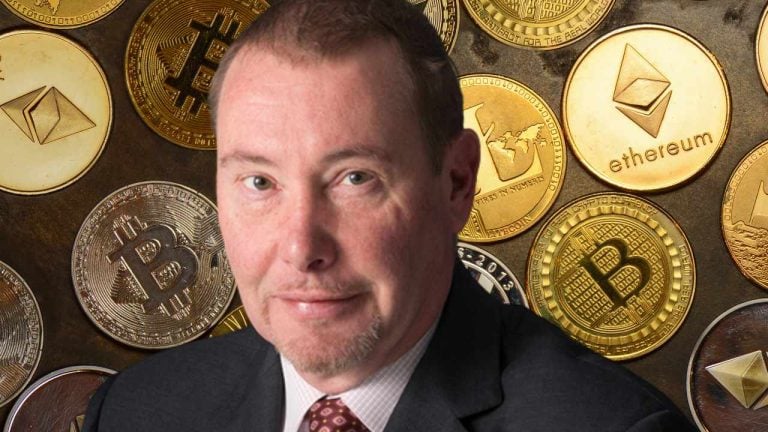 Billionaire Jeffrey Gundlach, aka the Bond King, has shared his view on when to buy cryptocurrency. “You need a true Fed pivot,” he stressed. Gundlach also warned about the increasing risk of deflation, noting that it’s time to be bearish on the stock market. Jeffrey Gundlach on Fed Rate Hikes, U.S. Economy, and When to […]
Billionaire Jeffrey Gundlach, aka the Bond King, has shared his view on when to buy cryptocurrency. “You need a true Fed pivot,” he stressed. Gundlach also warned about the increasing risk of deflation, noting that it’s time to be bearish on the stock market. Jeffrey Gundlach on Fed Rate Hikes, U.S. Economy, and When to […]
Bitcoin price could resume its downtrend if the Fed keeps on hiking rates against the prospects of a rising unemployment rate.
Bitcoin (BTC) has rebounded by 20% to almost $22,500 since Sep. 7. But bull trap risks are abound in the long run as Elon Musk and Cathie Wood sound an alarm over a potential deflation crisis.
The Tesla CEO tweeted over the weekend that a major Federal Reserve interest rate hike could increase the possibility of deflation. In other words, Musk suggests that the demand for goods and services will fall in the United States against rising unemployment.
A major Fed rate hike risks deflation
— Elon Musk (@elonmusk) September 9, 2022
Rate hikes have been typically bad for Bitcoin this year. In context, the period of the Fed raising its benchmark rates from near zero in March 2022 to 2.25%-2.50% in August 2022 has coincided with BTC price declining over 50%.
To this point, the labor sector has been very resilient. Nonetheless, the latest Bureau of Labor Statistics report shows that the jobless rate has risen to 3.7% from 3.5% in August. Even Alphabet (Google) warned that they could turn to layoffs soon to stay 20% more efficient.
But Fed Chairman Jerome Powell has asserted that the central bank could hike rates further to bring inflation down to their preferred target of 2%.
As of July, the U.S. consumer price index (CPI) was 8.5% year-over-year. The August inflation data is scheduled to release on Sep. 13, with a Reuters poll of economists predicting it would fall to 8.1%, citing a recent drop in energy prices.
That is still far from the Fed's 2% inflation target, which according to David Blanchflower, a former Bank of England rate setting committee member, will lead to a hard landing. Thus, a hawkish Fed could usher in rising joblessness and an economic recession, similar to what Musk predicts about deflation.
Along the same lines, Ark Invest CEO Cathie Wood, who sees Bitcoin hitting $1 million by 2030, cited the latest Manheim data, noting that the used car prices dropped 4% in August and roughly 50% in 2022. The metric again indicates waning consumer demand.
Deflation in the pipeline, heading for the PPI, CPI, PCE Deflator: from post-COVID price peaks, lumber -60%, copper -35%, oil -35%, iron ore -60%, DRAM -46%, corn -17%, Baltic freight rates -79%, gold -17%, and silver -39%. https://t.co/nVpU1cdf1L
— Cathie Wood (@CathieDWood) September 12, 2022
Bitcoin could feel the pain of a deflation-led recession, with Ecoinometrics' analyst N suggesting that companies with cash holding would not dip their toes in a volatile asset until the economy has bottomed.
He explained:
"From 2020 to 2021, there is a large number of new entrants in the space of digital assets, which pretty much doubled the total hodlings in treasuries. And as the market slowed down, everything stopped."

Retail investors could follow a similar strategy, notes Q.Ai, a Forbes-backed investment service.
In other words, higher borrowing rates would increase the flow of people's monthly incomes toward debt repayment (mortgages, credit cards, etc.), decreasing their cash allocation for riskier assets like Bitcoin.
Macro fundamentals may also trigger Bitcoin's bearish technicals to play out, particularly on the daily chart.
Bitcoin appears to have been forming an inverse-cup-and-handle bearish reversal pattern, confirmed by a flipped U-shaped price trend (cup) followed by a short uptrend (handle), all atop a common support level called the "neckline."
Related: Bitcoin is a ‘wild card’ set to outperform — Bloomberg analyst
As a rule of technical analysis, an inverse cup-and-handle pattern's profit target is measured after subtracting the neckline level price by the maximum cup's height, as shown below.

Therefore, from a technical perspective, BTC's price risks new multi-year lows below $14,000 in 2022, down about 37.5% from today's price.
Moreover, Filbfilb, creator of trading suite DecenTrader who accurately predicted Bitcoin's bottom in 2018, told Cointelegraph that BTC can drop as low as $11,000 later this year, based on the historical volume around this level.
"As it stands, the price of Bitcoin is heavily correlated to the 'legacy' markets, in particular the NASDAQ, which we know is under huge pressure due to the Federal Reserve’s monetary policy," he explained. "So this time 'it’s a bit different' due to the high correlation and external economic forces."
The views and opinions expressed here are solely those of the author and do not necessarily reflect the views of Cointelegraph.com. Every investment and trading move involves risk, you should conduct your own research when making a decision.